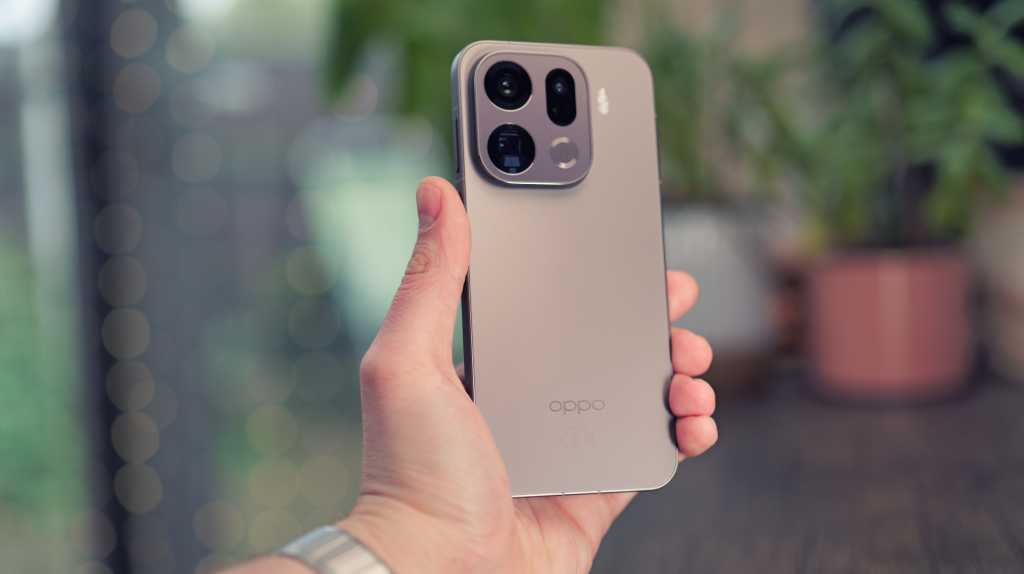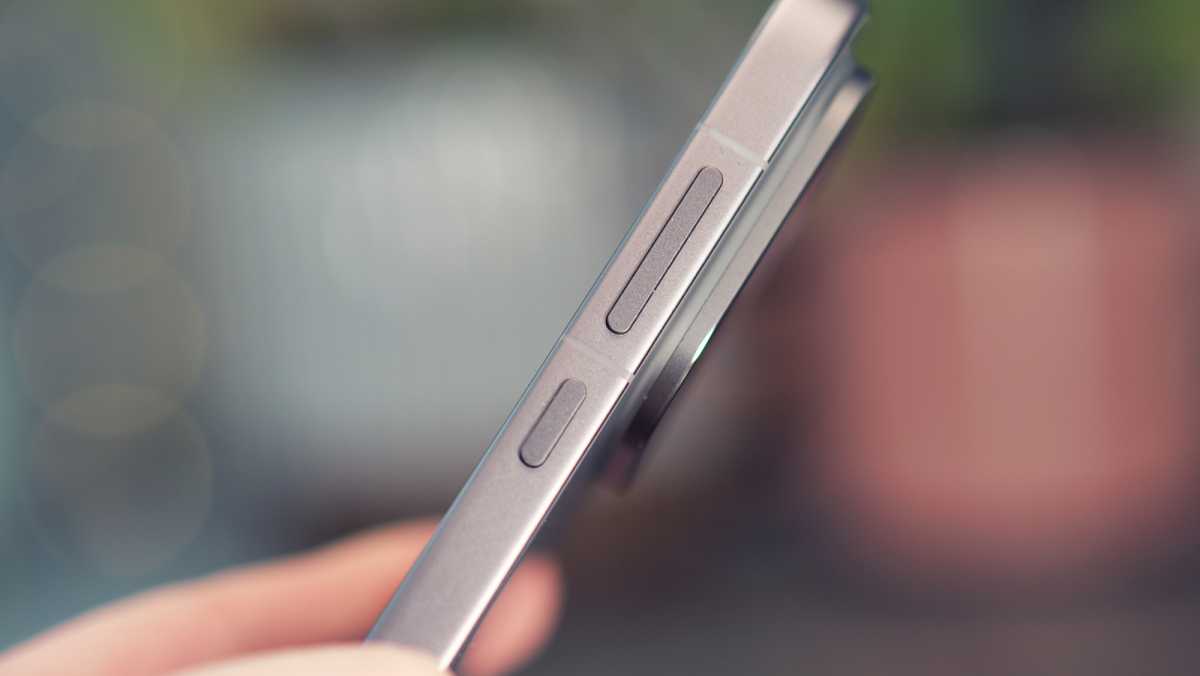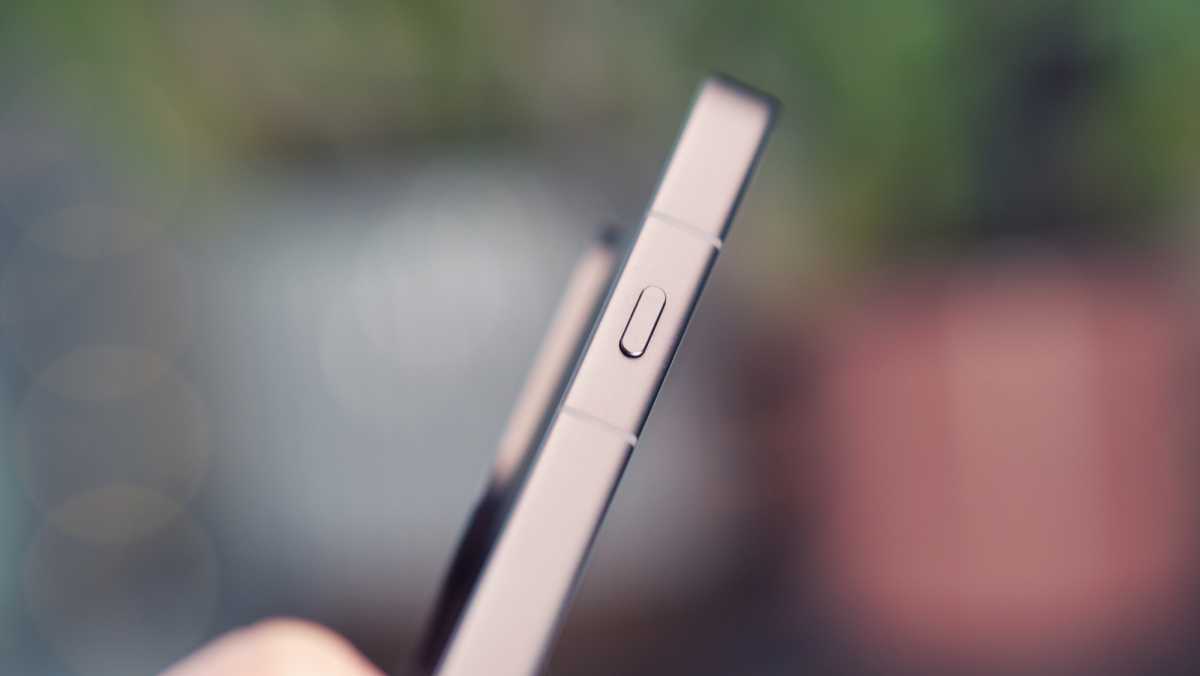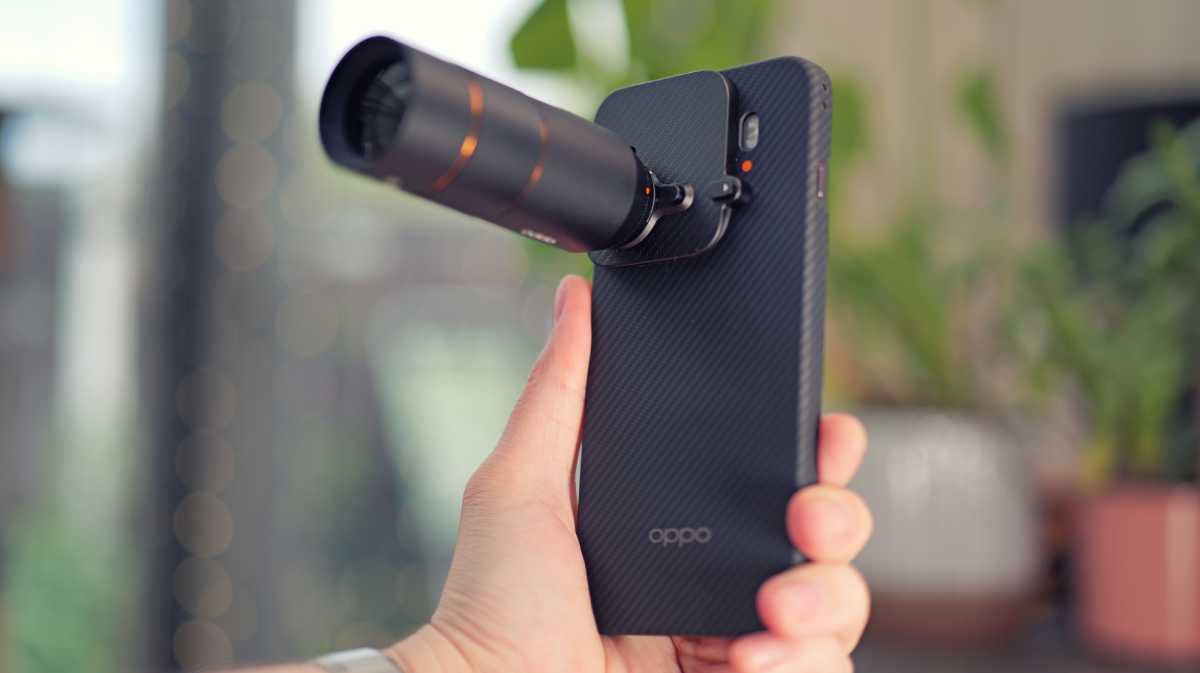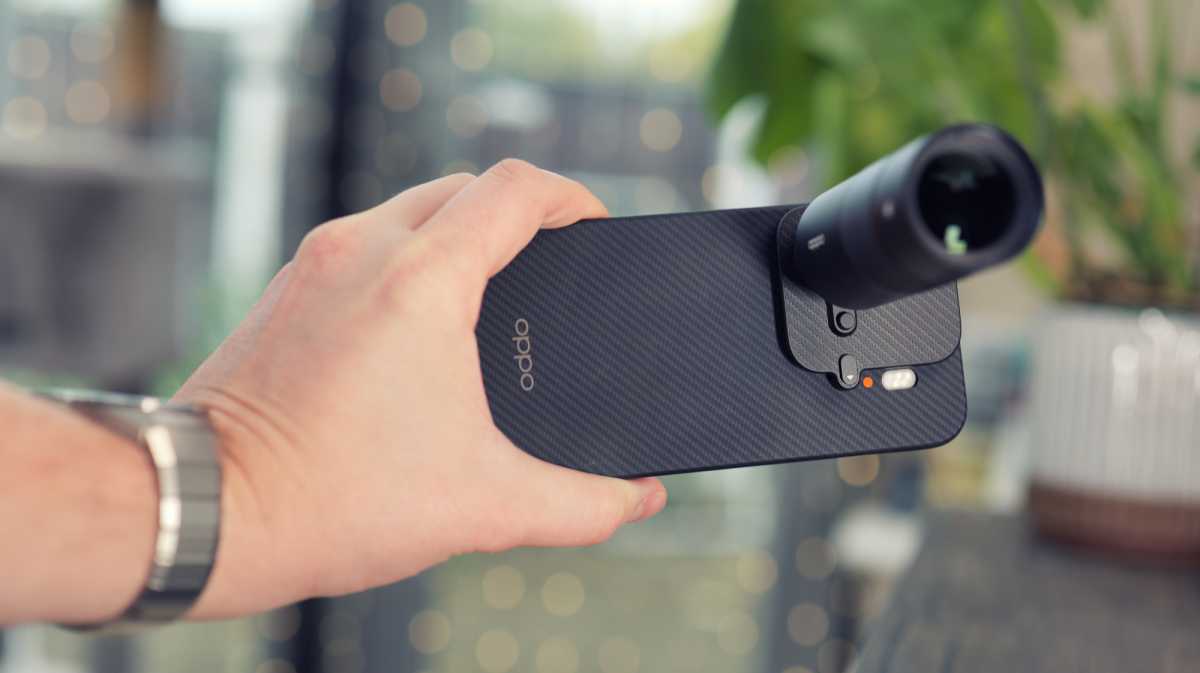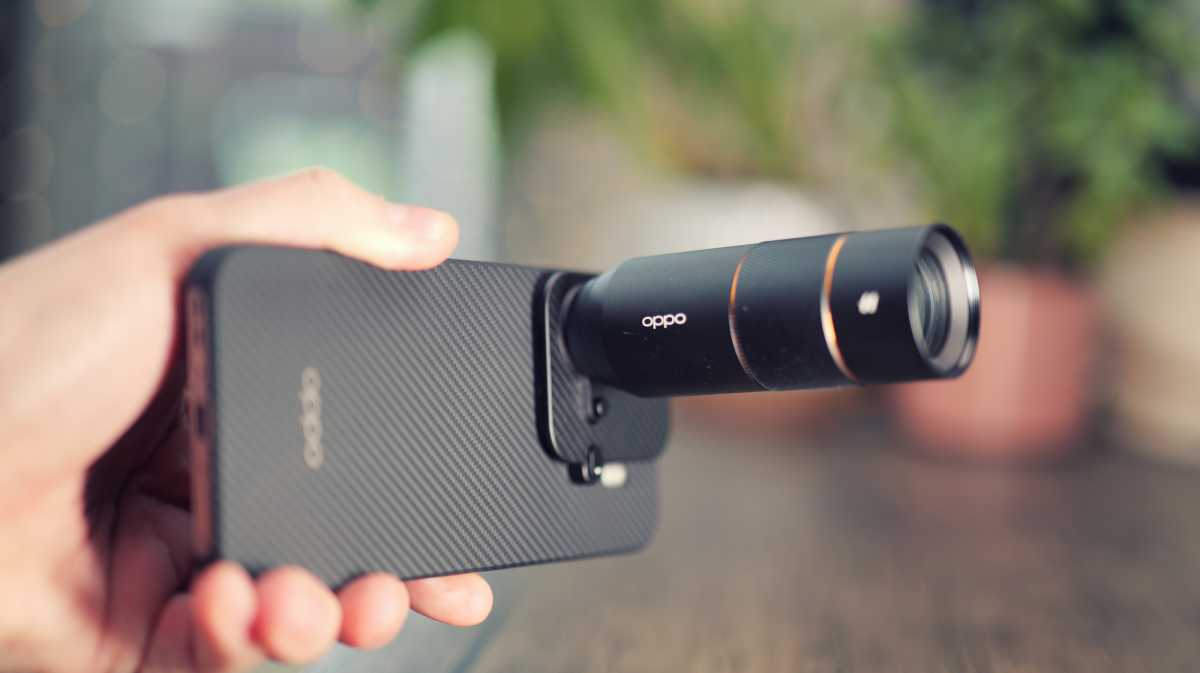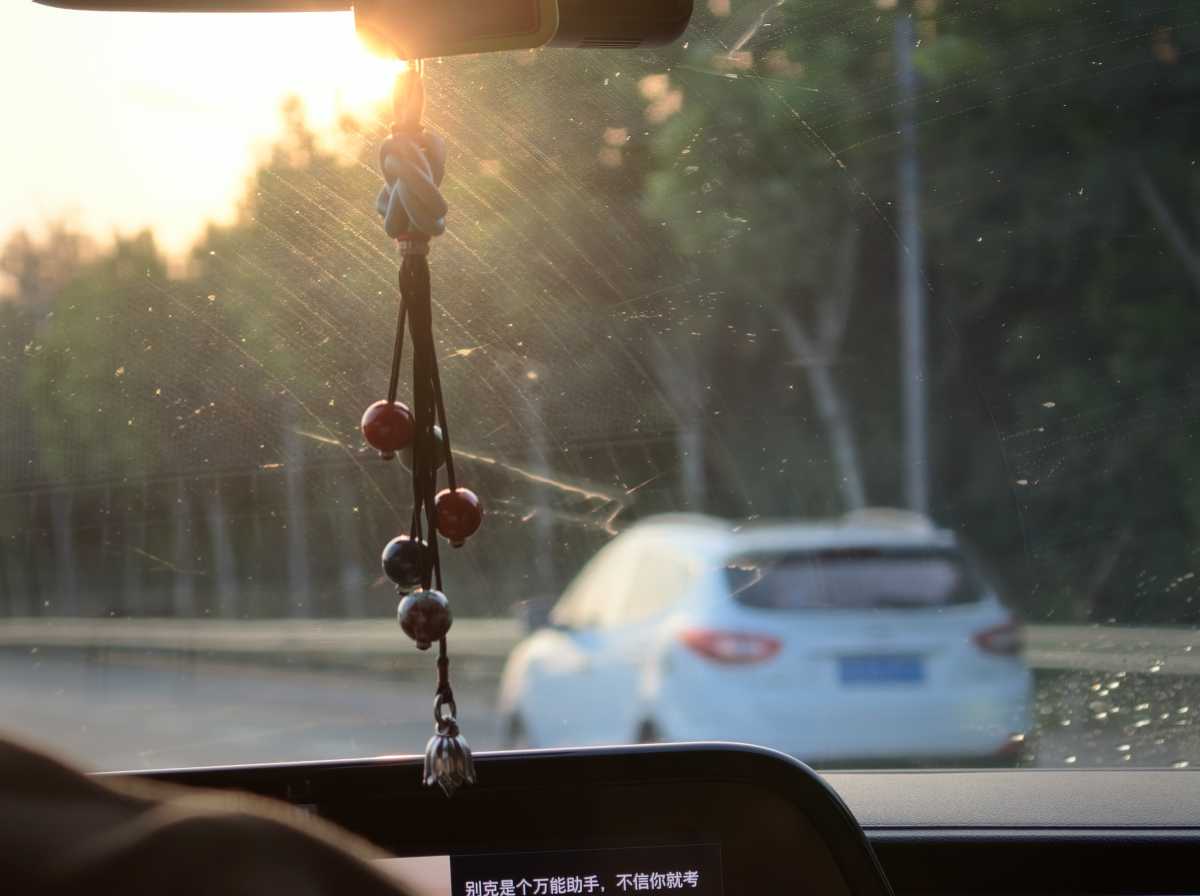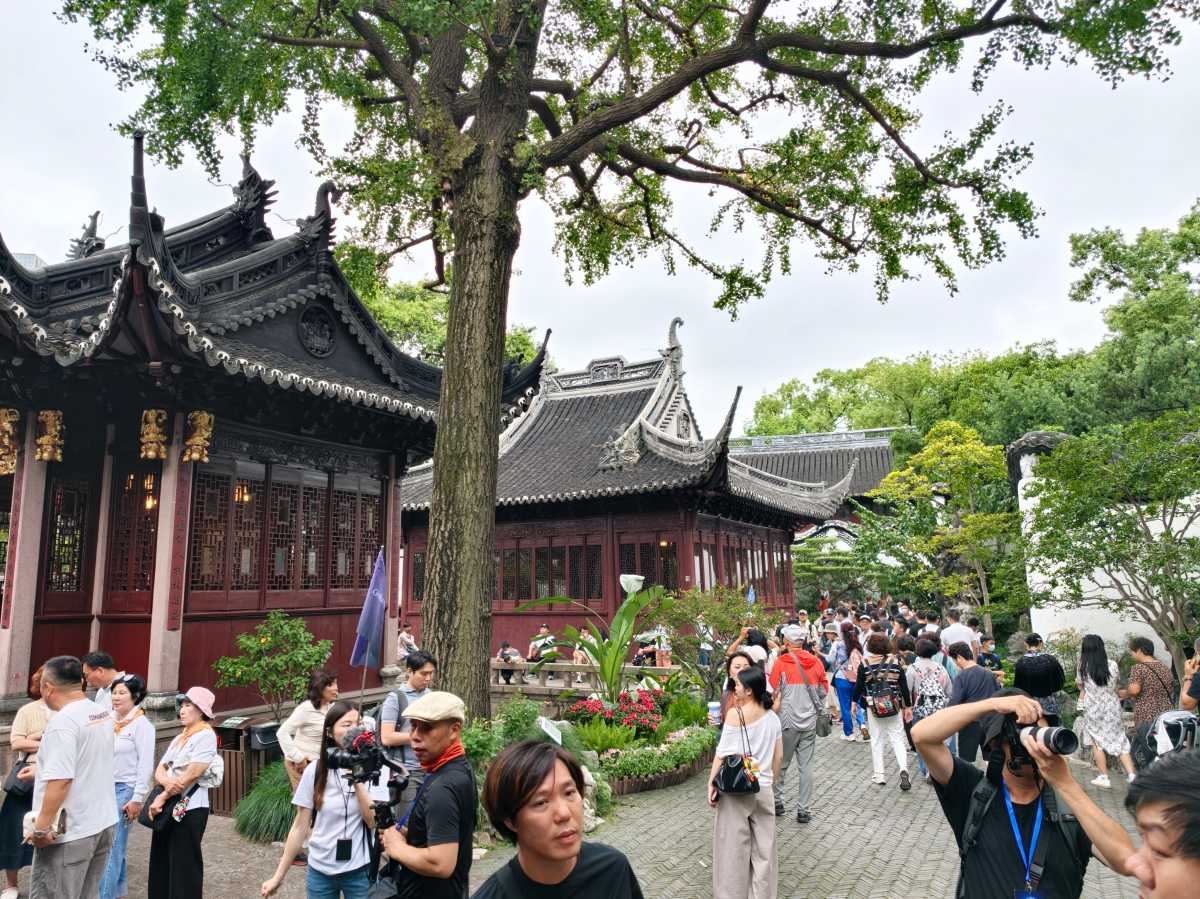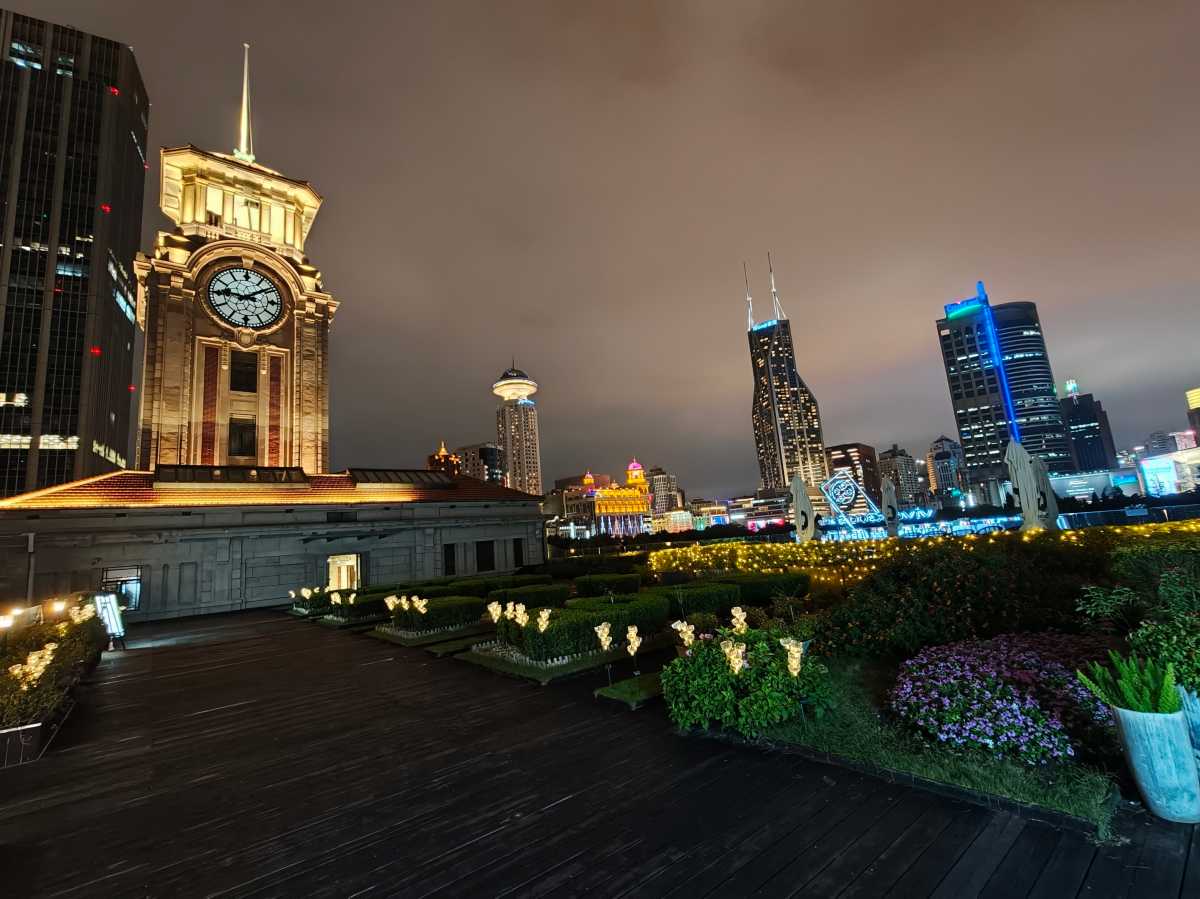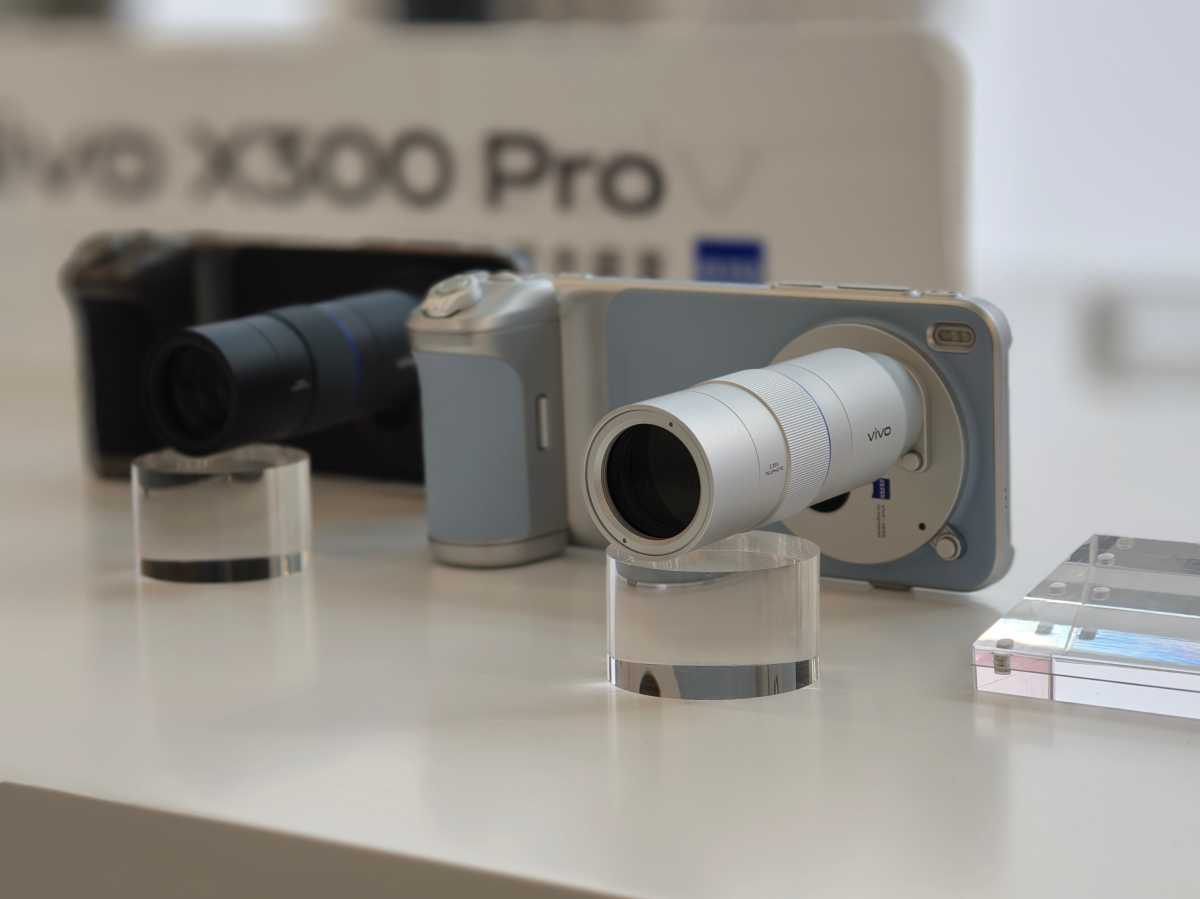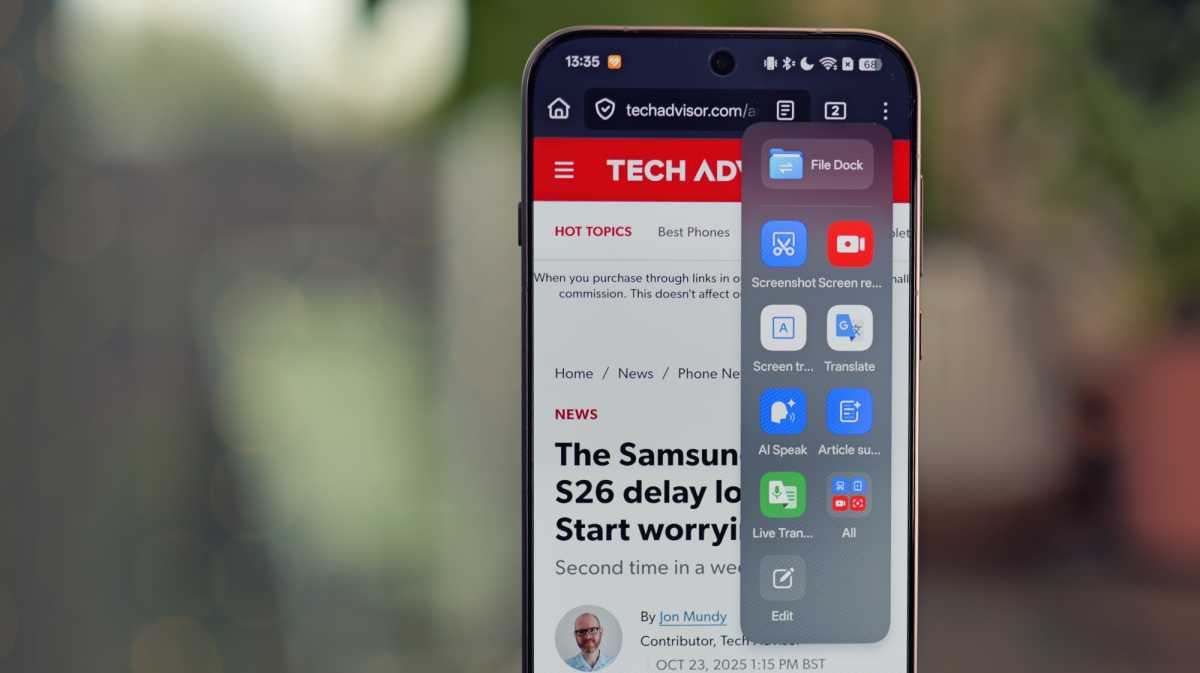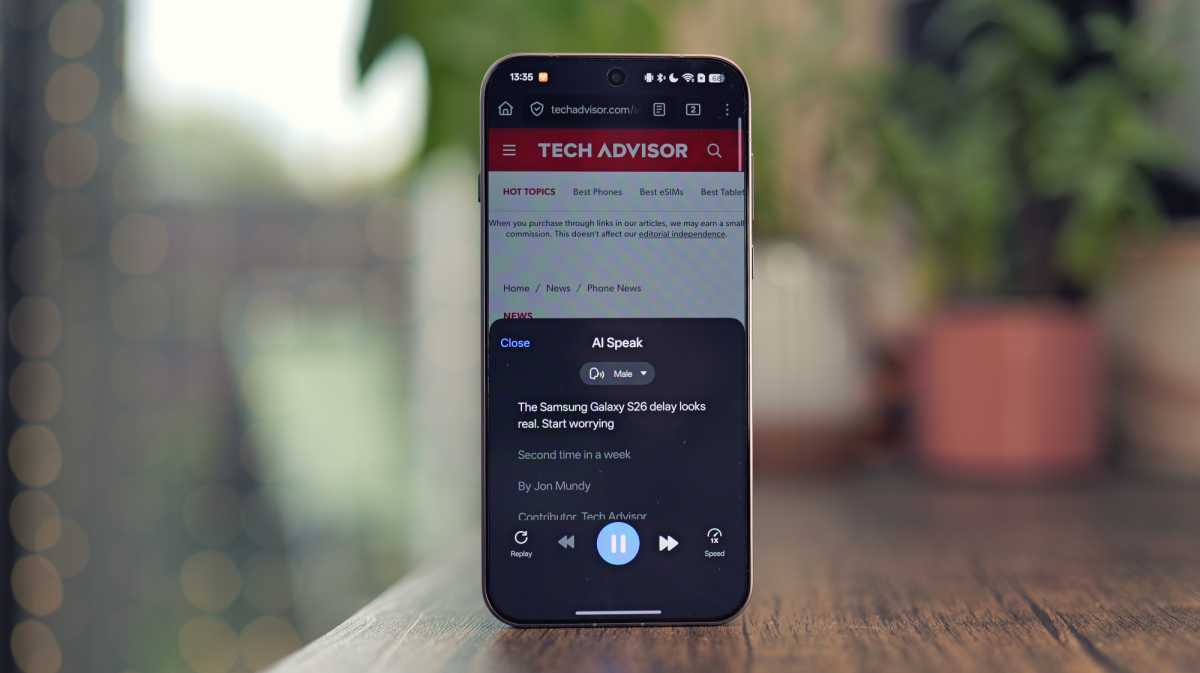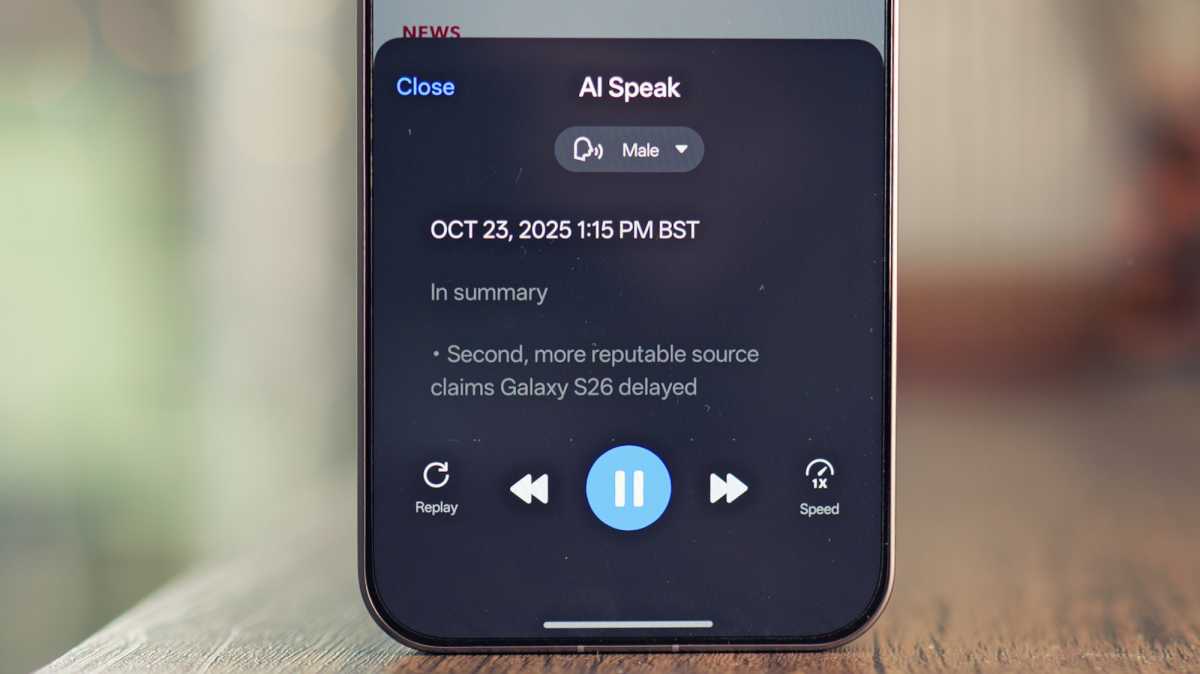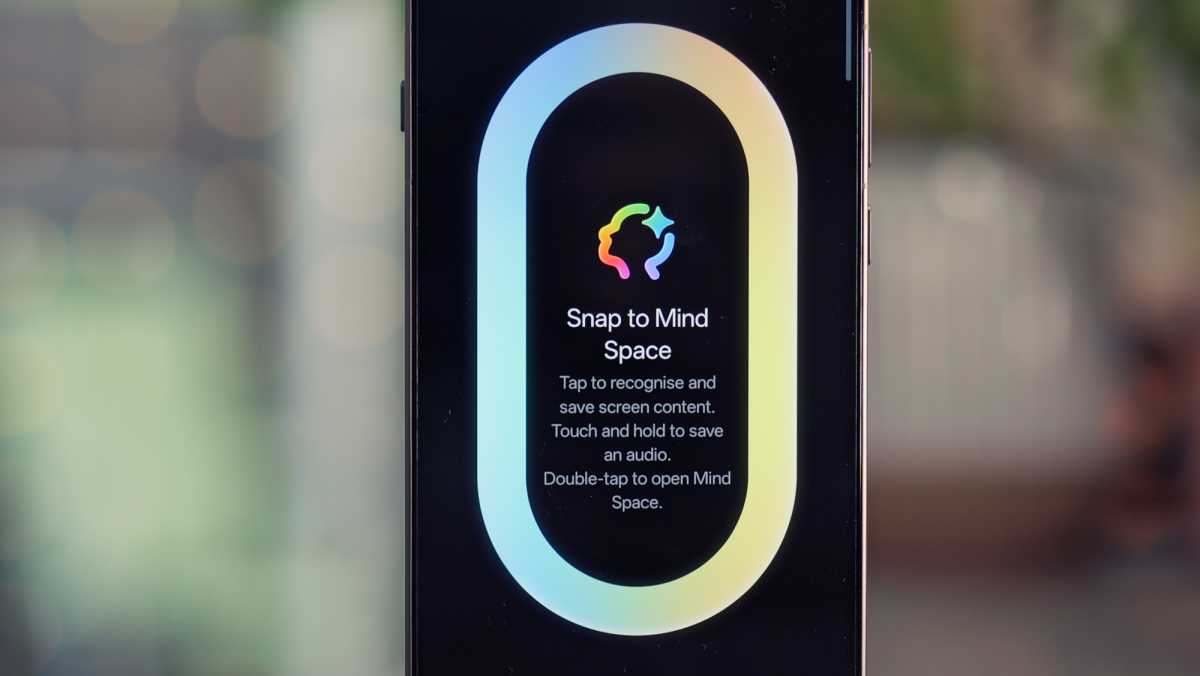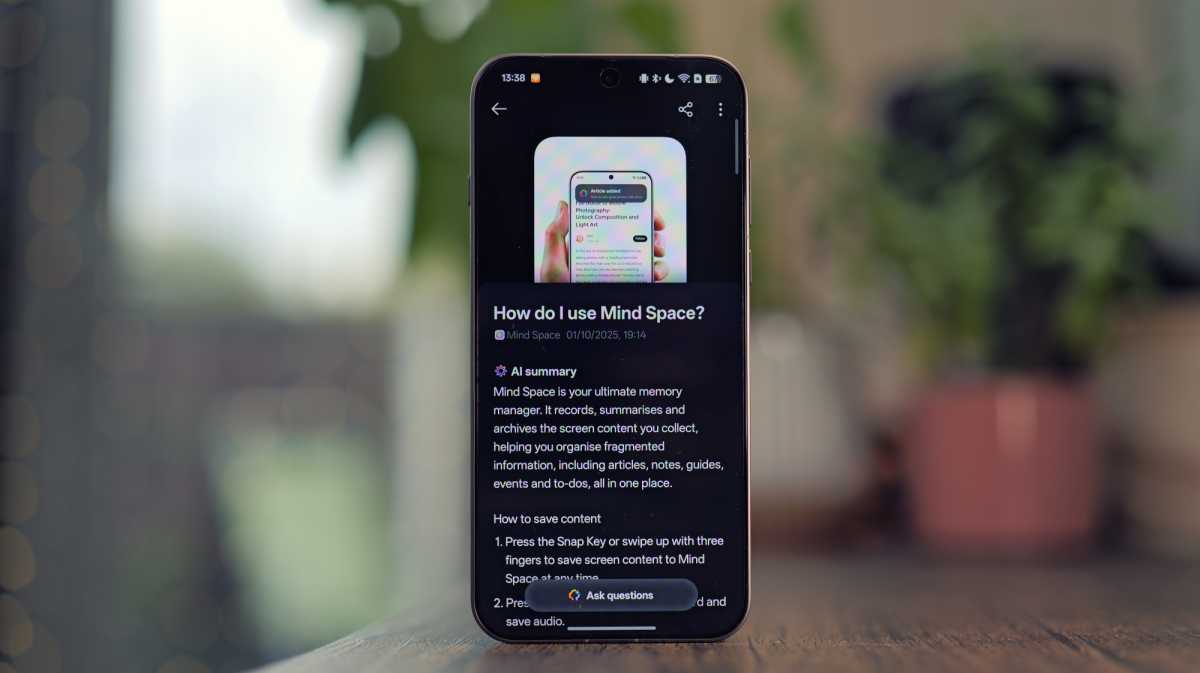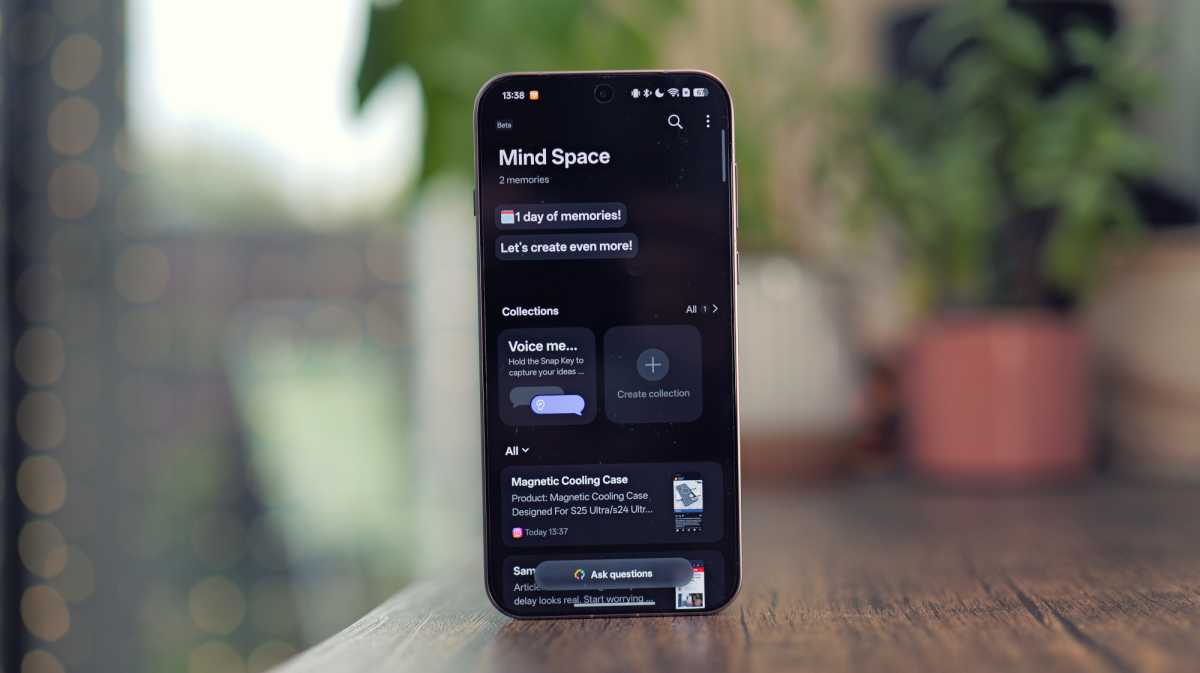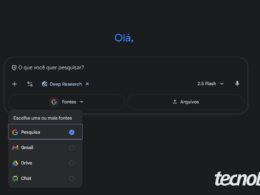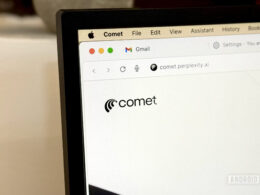At a glance
Expert’s Rating
Pros
- Phenomenal cameras
- Gigantic battery
- Excellent performance and software
- One of the nicest screens around
- Awesome accessories
Cons
- Not available in the US
- Only 5 years of Android OS updates
Our Verdict
The Oppo Find X9 Pro might be my favourite phone of 2025. There are some models that are better at specific tasks, but as an all-rounder, nothing beats the X9 Pro. It has exceptional cameras, extremely long battery life, great performance and awesome software with useful AI additions. I just love it.
Price When Reviewed
This value will show the geolocated pricing text for product undefined
Best Pricing Today
Best Prices Today: Oppo Find X9 Pro
Following a few years of absence, Oppo returned to the UK market with the Oppo Find X8 Pro in late 2024. At the time, I said it was probably the best camera phone you could buy (excluding imports). Now, its successor has landed, with a fresh design and upgrades all over, and I couldn’t be more excited.
This model sports the latest Dimensity 9500 chip, a gargantuan 7500mAh battery, a new camera system (including a 200Mp telephoto), and a photography kit with an attachable telephoto extender. All signs point towards it being one of the best camera phones of the year.
I’ve actually had this phone for almost a month, and I’ve been using it as my primary handset the majority of the time. I’ve tested absolutely everything and flown around the world with it in my pocket, too. After spending so much time with it, I’ve got plenty of thoughts, so let’s dive in.
Design & Build
- New iPhone-like design
- Aluminium frame, glass back
- 224g, IP69 rated
With the Find X9 series, Oppo has changed things up. We’ve seen large centrally placed camera modules for the last few generations, but now, Oppo is reverting to the classic iPhone-esque upper-left corner camera array.
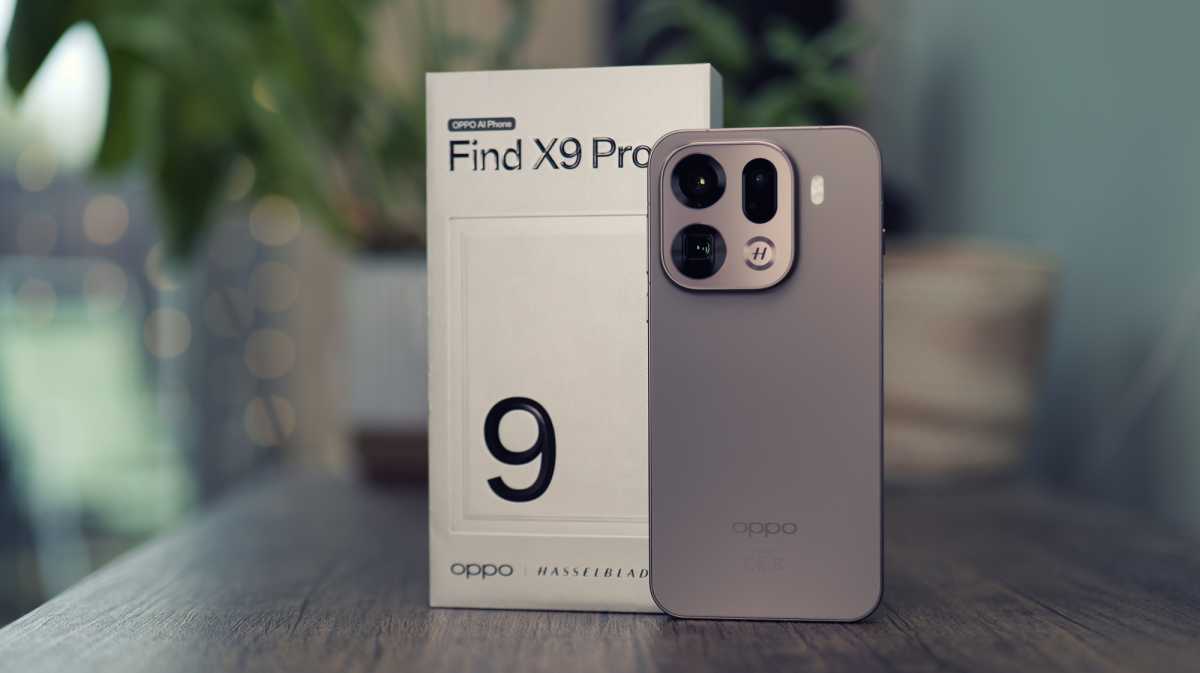
Luke Baker
When I first saw the new design, I wasn’t too keen. It looks fine, but I just couldn’t help feeling that this was a step backwards. Compared to the last few designs, this one looks rather anonymous.
However, once I got my hands on it, I quickly changed my tune. It looks and feels incredibly premium, much more so than the X8 Pro, which, despite being made from aluminium and glass, has a slight plasticky feel to it. This model is cold, dense and professional.
It looks and feels incredibly premium, much more so than the X8 Pro
The Find X9 Pro has adopted a fully flat design with boxy side rails, again, very much like an iPhone. This usually makes phones feel larger in the hand, but holding it side-by-side with its predecessor, the new model feels surprisingly compact.
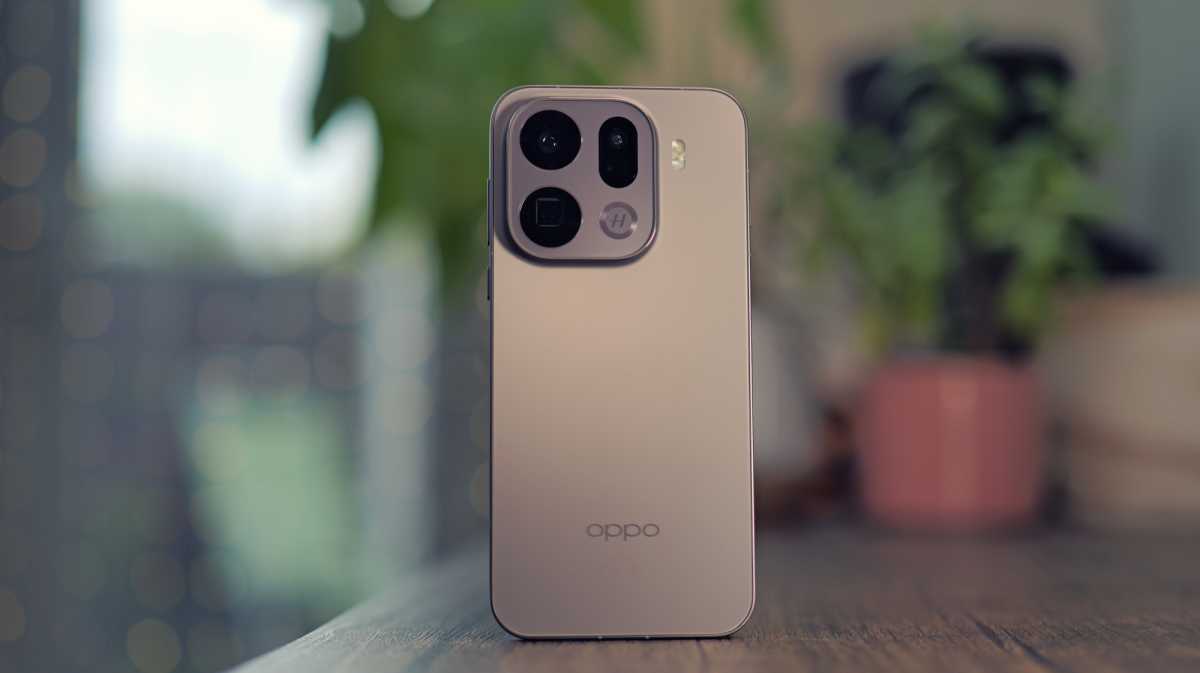
Luke Baker
Like the previous generation, the Oppo Find X9 Pro sports a Quick Button, which is essentially Oppo’s clone of Apple’s Camera Control, and it’s positioned in the same spot. This one’s been reengineered to detect swipes as small as 0.3mm, but otherwise it works in the same way. A double press will open the camera app, swiping can zoom in and out, and clicking will take a photo.
The classic notification slider has been replaced on this model, and now you get a customisable button that Oppo calls the Snap Key. Again, the Apple influence is plain to see; it’s like a 1-to-1 copy of the Action Button. That said, I love the Action Button, and Oppo’s version is just as handy.
Now you get a customisable button that Oppo calls the Snap Key
It’s available in two colourways, either Titanium Charcoal or Silk White, and I have the former in for testing. Both are very minimalist and professional. I like the way they look, but they don’t make much of a statement compared to something like the orange iPhone 17 Pro. Depending on your tastes, that could be a good or a bad thing.
Both the rear and sides have a matte finish, and you’ll never have to worry about fingerprint smudges, because this panel seems to be immune.
Oppo hasn’t mentioned what glass it’s using on the display, but there’s a factory-applied screen protector included, and it’s of excellent quality. I’m a bit of a screen protector hater. I usually rip them off at the first opportunity, either because they smudge too easily, attract dust, or just feel a little tacky. This one, though, didn’t bother me at all, and I’m still using it after weeks.
The phone is IP68/69 rated for water and dust resistance, so it should handle the elements with ease. However, there’s no case included in the box (unusual for Oppo), so you’ll likely want to pick one up to keep your phone looking pristine.
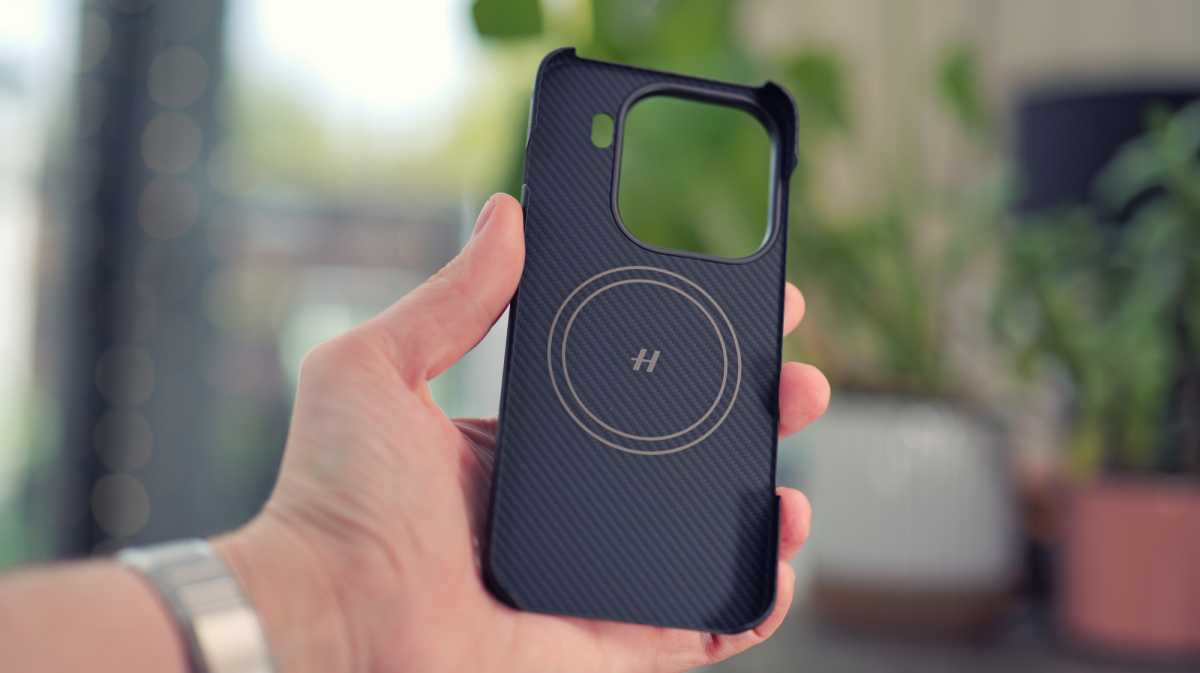
Luke Baker
If you pick up an official case, most have MagSafe-compatible magnets built in, which is really handy. Using this phone with a MagSafe holder in my car made me appreciate the design change more. The smaller camera bump means the magnets can be much more central, and so accessories like that work better than they do with my Find X8 Ultra.
Hasselblad teleconverter kit
- Aramid-fibre case with magnets
- Quick-release lens attachment
- 3.28x teleconverter lens (9.8x in use)
Vivo saw a lot of success earlier this year with its optional Zeiss teleconverter add-on for the X200 Ultra, and it doubled down with the new X300 series phones. Now, Oppo is getting in on the action with a teleconverter of its own.
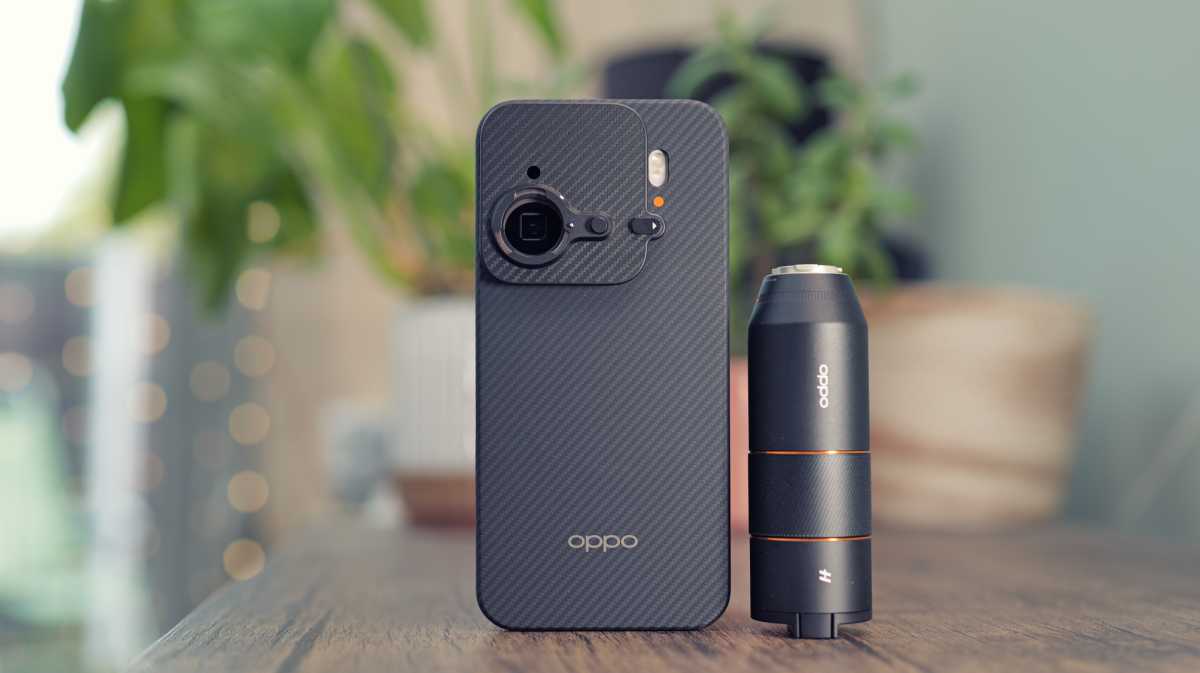
Luke Baker
This one, as you might expect, has a Hasselblad logo on it, but otherwise it looks a lot like Vivo’s one, and functions in basically the same way.
The kit comes with a very nice slim-line aramid fibre case, complete with MagSafe-compatible magnets. It looks and feels almost identical to a high-end case from a brand like Pitaka. It’s a massive improvement on Vivo’s plasticky and chunky photography kit case.
The teleconverter lens attaches via a small bayonet mount on a plate, which slides over the camera module and clicks into place. It blocks all lenses except for the telephoto when it’s attached, but it slides on and off pretty easily, so it’s not too inconvenient to remove and reattach as and when it’s needed.
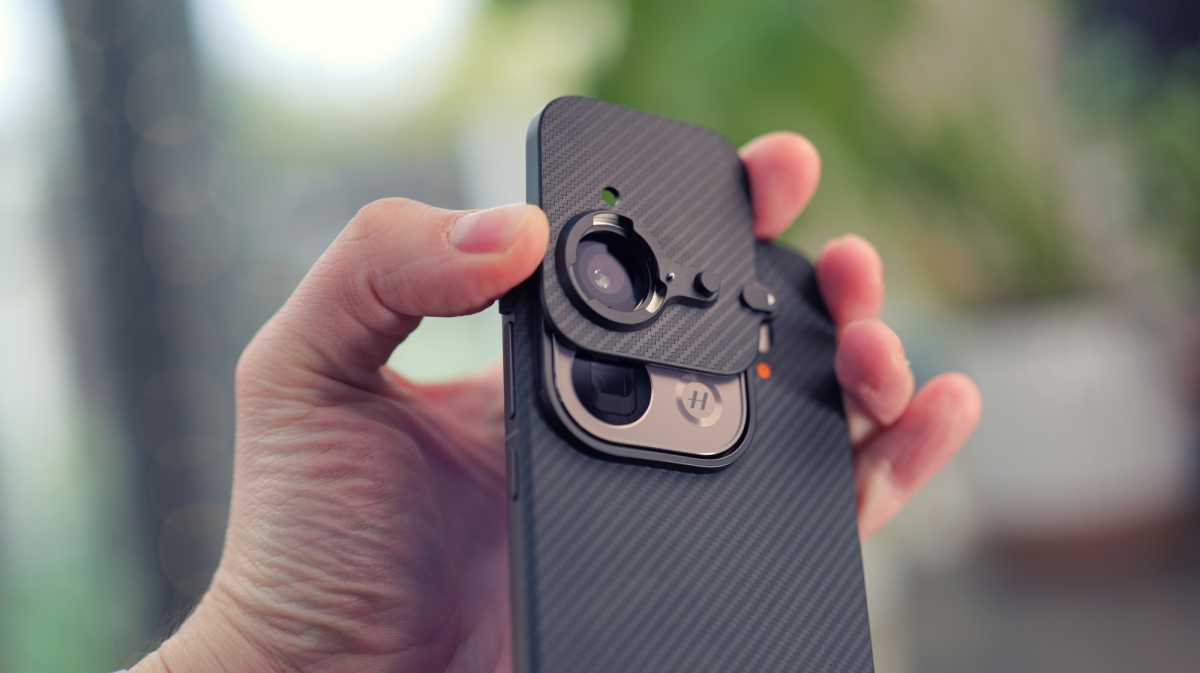
Luke Baker
The lens itself feels extremely premium. It’s made from metal with glass lenses, and it has some heft to it. It provides a 3.28x magnification, so when you place it in front of the 3x telephoto, you get a shot equivalent to just under 10x zoom.
It feels a bit crazy shooting with such a large lens sticking out of your phone, and I think that stood out to me more as I wasn’t sent a grip to counterbalance it. Early teaser images show that some kind of grip accessory does exist, but whether that launches internationally or not remains to be seen.
To use the lens, you need to go into the dedicated “Hasselblad Teleconverter” mode in the camera app, as otherwise the image will be upside down. It’s very similar to the X200 Ultra’s setup, wherein your options are slightly more limited using the external lens.
Video maxes out at 4K 60fps, rather than 4K 120fps, and there are no pro options or Log recording. When shooting photos, you get some basic options like stage mode and picture style options, but there are no manual controls, and you can’t shoot in RAW or at the full 200Mp resolution.
To be fair, this was what I expected. But after taking the Vivo X300 Pro for a spin, which allows you to access essentially every part of the camera app with the teleconverter attached, this feels like a step backwards. Of course, there’s every possibility that Oppo will expand the functionality via software updates.
Screen & Speakers
- 6.78-inch, 1272 x 2772, LTPO OLED, 120Hz
- 1-3600 nits, 2160Hz PWM dimming
- Stereo speakers
The screen on the Oppo Find X9 Pro is easily among my favourites. It’s now a spacious 6.78-inch fully flat display, with an incredibly narrow symmetrical bezel. As far as I’m aware, this might be the slimmest bezel of any smartphone so far, measuring just 1.15mm on all sides.
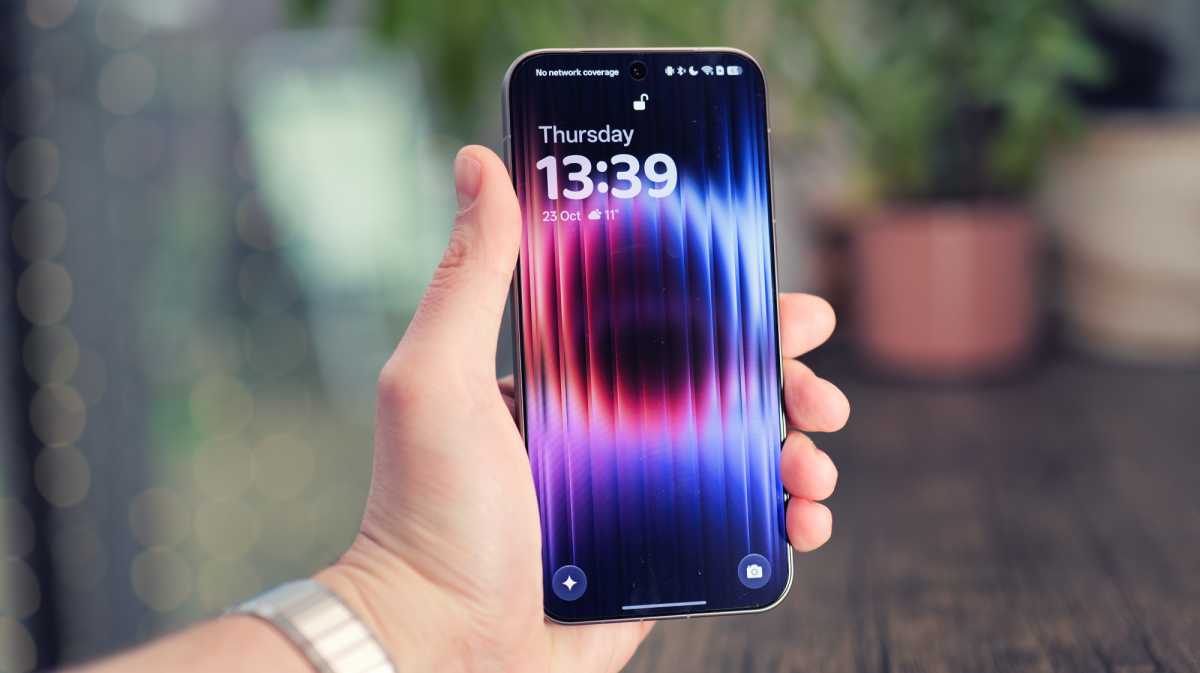
Luke Baker
It makes the phone feel extremely sophisticated, and means that you get maximum screen size with a minimal physical footprint.
The screen on the Oppo Find X9 Pro is easily among my favourites
The display can dim all the way down to 1 nit, so you can scroll socials in bed without disturbing your partner. And if you’re worried about eye strain, you needn’t be, as this panel boasts 2160Hz high-frequency PWM dimming.
On the other end of the scale, the screen can boost to 3600 nits to compete with bright sunlight, but Oppo measures its output differently than some other brands, so it’s brighter than it may sound. In any case, I certainly never had trouble seeing it outdoors.

Luke Baker
It’s a 10-bit display that covers 100% of the DCI-P3 colour space, and it’s certified to playback Dolby Vision, HDR10+ and HDR Vivid content. This means TV shows and movies from your favourite streaming apps always look as they were intended.
When it comes to audio, the phone has dual stereo speakers. One fires from the base of the phone next to the USB-C charging port, and the other doubles up as the phone’s earpiece.
They’re a very decent set of speakers, offering both clarity at the top end and a full, weighty bass response. My only complaint is that they’re not the loudest around, but on the plus side, they don’t distort or sound too harsh at maximum volume.

Luke Baker
Specs & Performance
- MediaTek Dimensity 9500
- 16GB RAM
- 512GB storage
The Oppo Find X9 Pro is one of the first phones (alongside the Vivo X300 series) to feature MediaTek’s latest flagship chip, the Dimensity 9500. Supposedly, it’s around 30% faster than the previous-gen in CPU and GPU workloads, and around 42% more power efficient.
In short, the new chip is a rocket. I demand a lot from my phones, whether it’s playing Wuthering Waves on maximum settings, editing videos or serious multitasking. The Dimensity 9500 easily kept pace throughout.
I demand a lot from my phones…the Dimensity 9500 easily kept pace throughout
I got some weird results from the GFXBench suite (which happens from time to time), but the phone posted an impressive 3DMark Wildlife Extreme score of 7062, handily outperforming the Galaxy S25 Ultra, with its special overclocked Snapdragon 8 Elite chip.
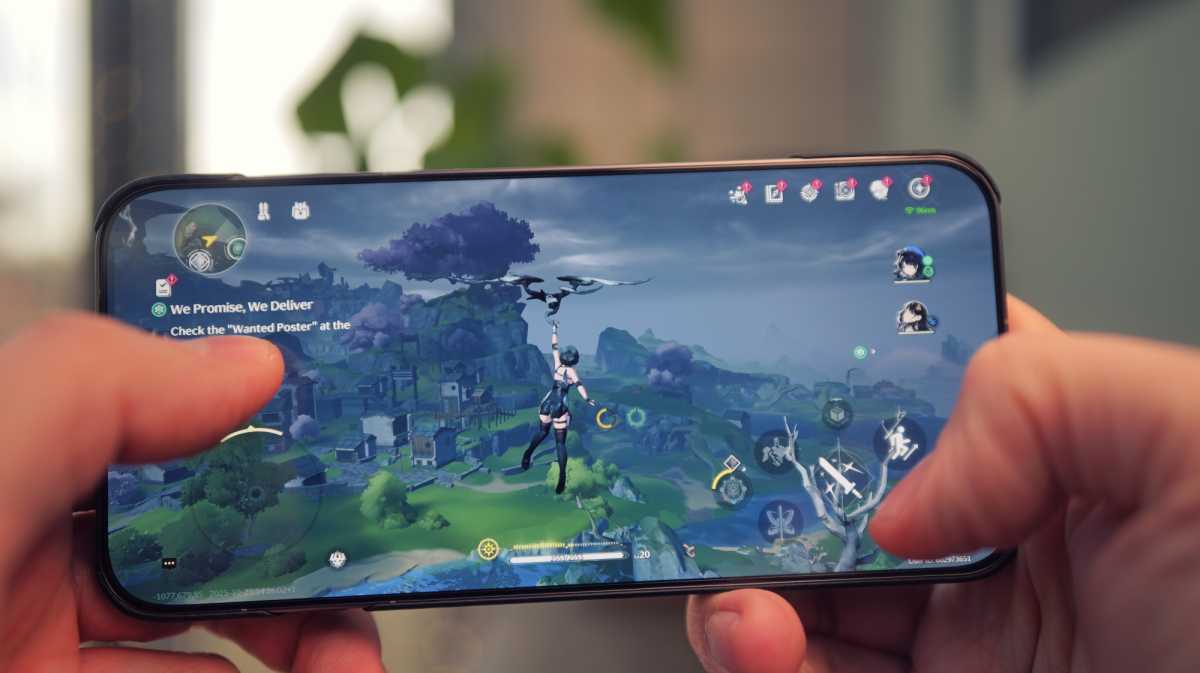
Luke Baker
The bigger question, though, is how it compares to the fresh new Snapdragon 8 Elite Gen 5. We haven’t properly tested a production model yet, and there’s every chance it could be quicker. In reality, though, I think you’ll struggle to find something you can’t run at maximum settings on this phone – who really needs more than that?
Sustained performance is decent, but the phone will throttle somewhat if you’re pushing the limits for extended periods. On the plus side, the phone never gets too hot, so you can game for a long time without uncomfortably sweaty palms.
Only one model is launching internationally, which comes with 16GB of RAM and 512GB of storage. It’s more than enough for my needs, and I dare say many others will feel the same way.
Oppo Find X9 Pro benchmarks
Cameras
- 50 Mp f/1.5 main camera (1/1.28-inch)
- 200 Mp f/2.1 3x telephoto (1/1.56-inch)
- 50 Mp, f/2.0 ultrawide (1/2.75-inch)
- 50 Mp, f/2.0 selfie camera, AF
The Oppo Find X9 Pro takes a different approach to its predecessor. Rather than having two separate telephoto lenses, it opts for a more common three-lens array. There’s now only a singular 3x telephoto, but it has a massive 200Mp resolution and a large 1/1.56-inch sensor.
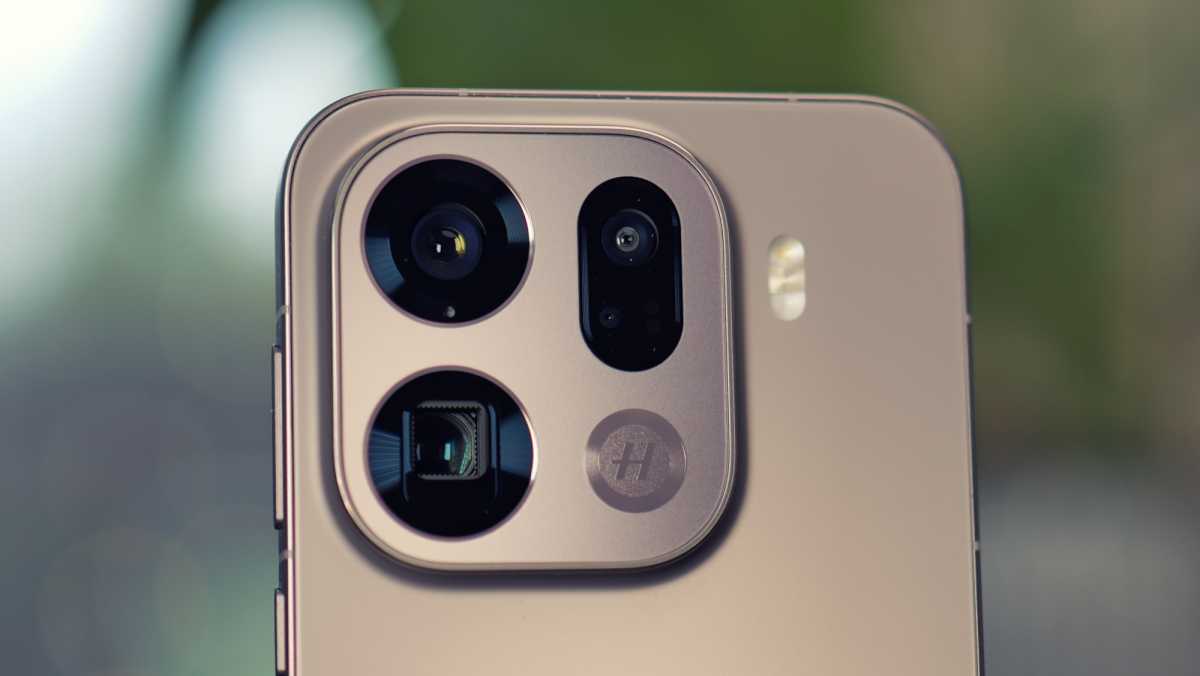
Luke Baker
It might sound like a downgrade, but in theory, the high-resolution sensor will make up for the lack of a 6x lens, as it can use pixel-binning to capture high-quality, cropped-in shots.
We’ve seen similar from the likes of Vivo and Honor, which both use 200Mp telephoto sensors on their 2025 flagship phones. They both consistently outperform the S25 Ultra for long-range zooms, too, despite the S25 Ultra having the quad-lens setup. So, this approach has merit.
As for the other sensors, there’s a 50Mp 1/1.28-inch main with a super-wide f/1.5 aperture, and a 50Mp ultrawide with autofocus. Around the front, you get a 50Mp selfie snapper, which also has autofocus, making it perfect for group photos.
Another big change with the Oppo Find X9 Pro is that it defaults to 50Mp resolution whenever the light is sufficient. If it’s darker, the cameras will bin down to a more common 12Mp resolution to let more light in.
Apple changed the iPhone’s default resolution to 24Mp a couple of years back, but most Android brands have yet to follow suit. Oppo has decided to just leapfrog the iPhone and shoot at over double the resolution, and I respect it.
Overall, I have been very pleased with my shots from the Find X9 Pro, regardless of the lighting conditions. The default image profile gives you a very natural and true-to-life look, but that’s easily tweaked with the library of filters and editing options, if you want to give your photos a little more flavour.
I noticed the colour accuracy has been greatly improved on this model, perhaps thanks to the new dedicated colour sensor. The Find X8 Pro and Ultra would both tend to favour cooler tones, but that wasn’t a problem with this model at all.
When it comes to zooming, the lack of a 6x lens doesn’t seem to hold this phone back at all. Oppo’s image processing is outstanding, and you can take photos that remain somewhat usable up to around 30x. Pushing beyond that, you’ll have the option to enable Oppo’s Generative AI to clean up the image. It works shockingly well, but it makes up details that aren’t there, and I’m not too keen on that, personally.
The optional teleconverter turns the 70mm equivalent telephoto lens into approximately a 230mm lens, and of course, you can zoom further than that with a digital crop. It makes a big difference to the clarity at 230mm, and it’s much better in low light at an equivalent focal length, as it uses the whole sensor rather than cropping in.
As for whether it’s worth using, that depends on your expectations. For long-range zooms, I didn’t find the quality difference too impressive, and I felt the same way about the X300 Pro’s teleconverter. The processing on the built-in lens is so good that the difference between the two is often quite subtle. It’s really with closer subjects that this lens comes to life.
Shooting middle-distance portraits, or semi close-ups, the natural compression of this external lens completely blurs the background, and gives images a much more 3D look. It’s hard to believe photos like that come from a phone, and I absolutely love it. I had a great time using it for wildlife and candid street snaps.

Luke Baker
Video shooting on this phone is excellent, too. You get some seriously professional-level features here, including the ability to shoot at 4K 120fps in 10-bit Log or Dolby Vision with both the main and telephoto cameras. Otherwise, the stabilisation is solid, and the clarity is superb. It could be a great companion for content creators.
Battery Life & Charging
- 7500mAh battery
- 80W wired charging
- 50W wireless charging
The Oppo Find X9 Pro comes with a gigantic 7500mAh silicon-carbon battery, the largest of any phone I’ve tested so far, and double the capacity of the base iPhone 17. Bucking recent trends, you’ll get this same massive battery, no matter where you reside, too.
You’ll get this same massive battery, no matter where you reside
Perhaps unsurprisingly, the battery life is phenomenal. I used the X9 Pro as my main device for a week in Shanghai, which was an absolute torture test, and it surpassed my expectations over and over again. I carried my power bank with me all week, and I never needed it.
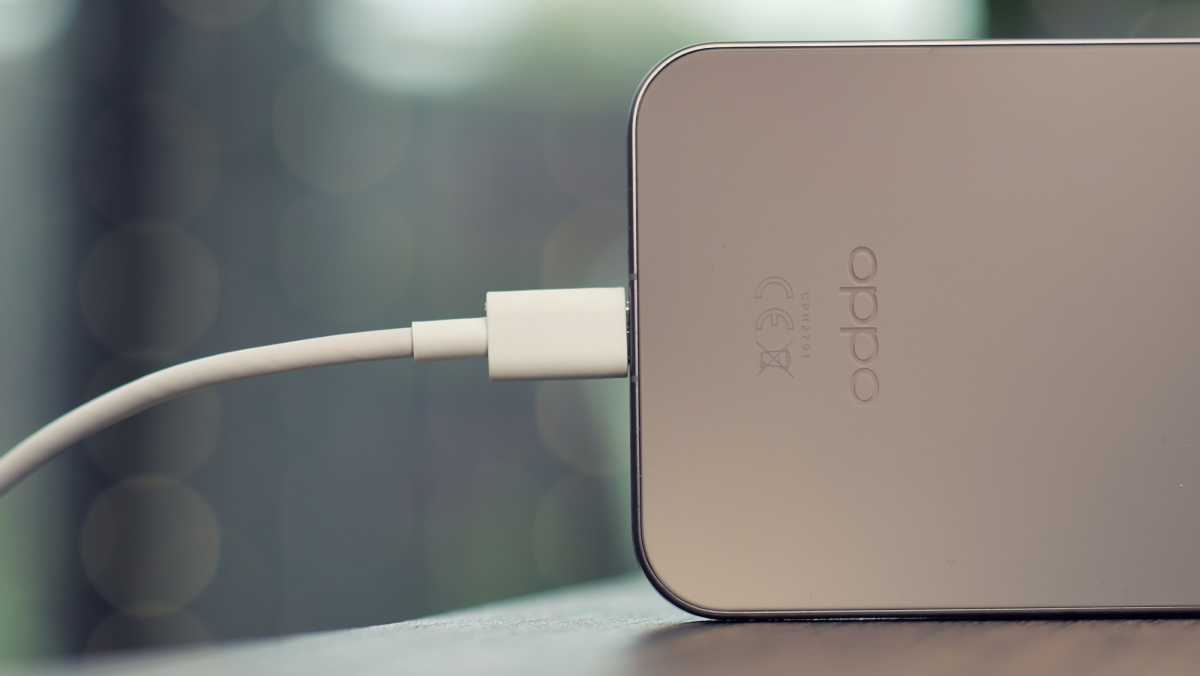
Luke Baker
To give a little more context, I was constantly using the phone for navigation and ride-hailing, using it as my primary payment method, translating everything with Google Lens and taking loads of photos and videos. Even still, I’d get to the end of a very long day with 30-40% left in the tank.
In more normal circumstances, when I’m working at my desk, two days on a charge is easily achievable, and I sometimes get into a third day.
You might think that such a massive battery will take ages to charge, but thankfully, that’s not the case. With an official 80W Oppo charger (sadly not included), you can go from fully flat to 50% charged in just half an hour. Wireless charging is rapid, too, supporting up to 50W speeds with Oppo’s AirVooc adapter.
Software & Apps
- ColorOS 16, based on Android 16
- Apple-inspired design and features
- AI features that you’ll actually use
ColorOS has grown to become one of my favourite Android skins in the last few years, and this latest iteration looks to be the best yet. It has received a pretty significant overhaul, and as with a lot of things on this phone, the Apple influence couldn’t be more obvious.
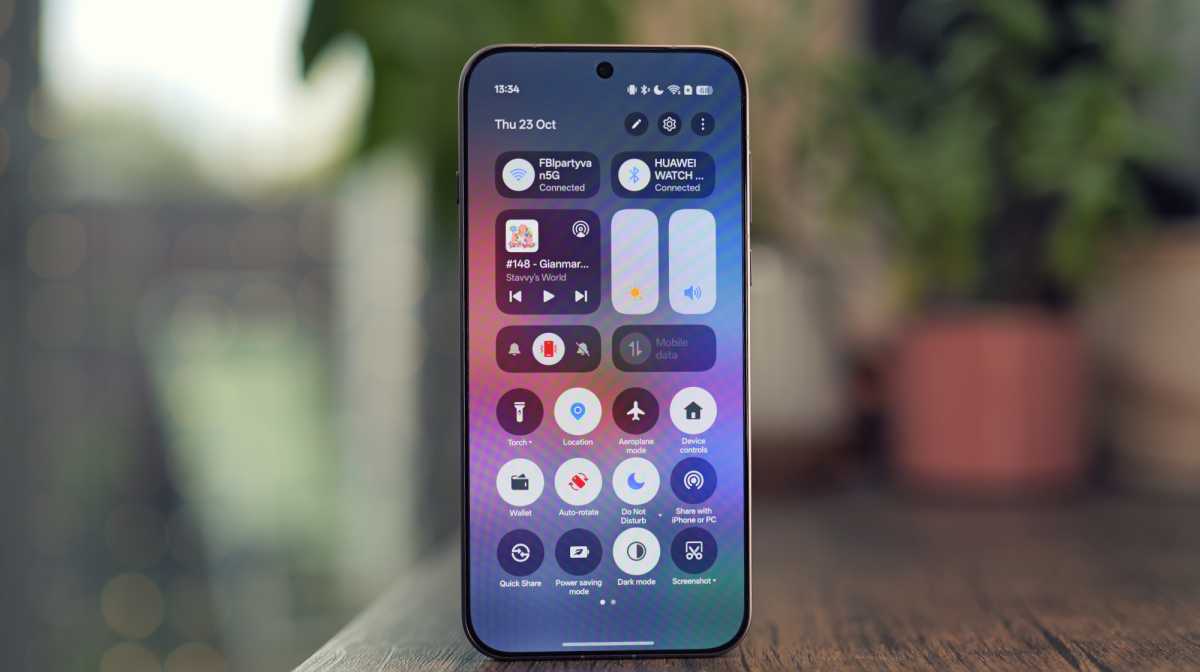
Luke Baker
There’s new Liquid Glass-like styling, split notifications and quick settings shades, upgraded lockscreen options and a Dynamic Island clone. If Apple has it, there’s a good chance Oppo has its own version. I’m sure this will rub some Android purists the wrong way, but personally, I’m a fan. Apple does some neat things with its software, and if they work, why not have them on an Android phone too?
the Find X9 series phones work with the Apple ecosystem better than most rivals
The Apple-like shenanigans don’t stop there, either. Oppo has been hard at work ensuring that the Find X9 series phones work with the Apple ecosystem better than most rivals. If you use a MacBook, you can use Oppo’s O+ Connect app to wirelessly connect and remotely control one device from the other. You can also share a clipboard, drag and drop files, and more. I have only tested this briefly, but it seems to work as advertised, and it’s really handy.
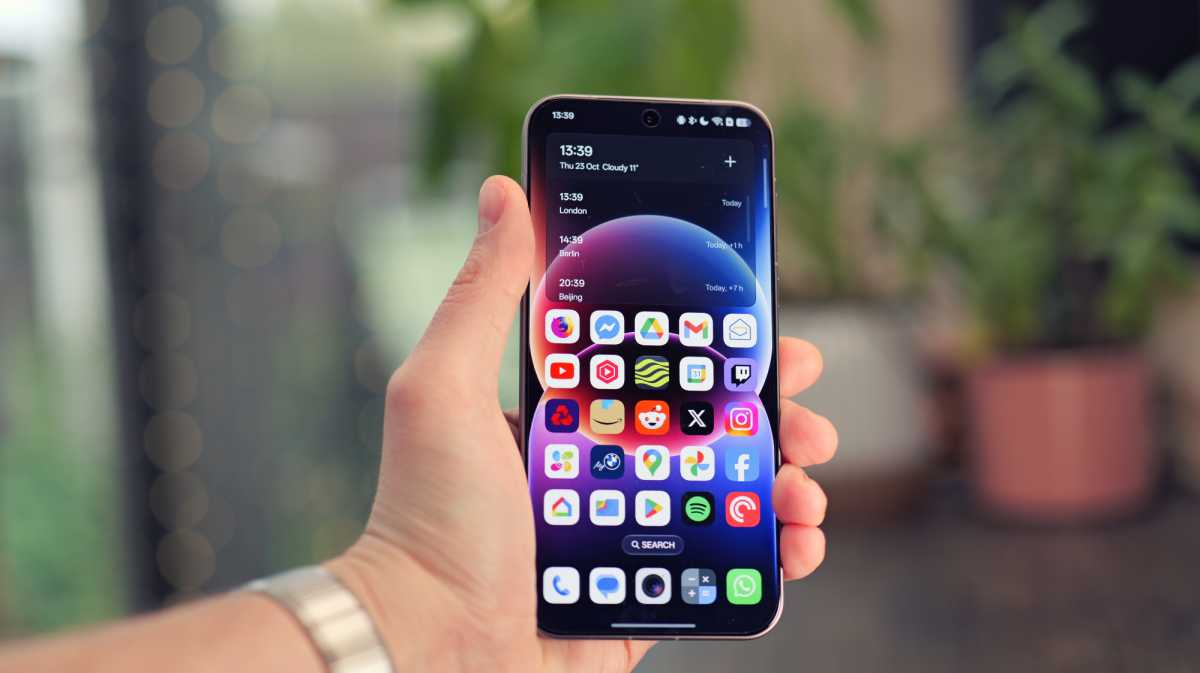
Luke Baker
The Oppo Find X9 can also share files to an iPhone with Touch to Share, and it’ll even pair with an Apple Watch, so long as it was originally activated with an iPhone. If you’re thinking of making the jump from iOS to Android, this phone could be a perfect fit.
In addition, Oppo has been working on the smoothness of the OS, and it shows. The animations have been reworked, and the new Luminious Rendering Engine allows for simultaneous rendering of multiple animations and effects. The result is a home screen that feels incredibly quick, no matter how many things you’re doing at once.
Oppo’s AI features were already my favourite, mainly due to the AI Speak feature, which will read webpages and articles to you in a very natural-sounding voice, so you’re free to multitask. Of course, all the usual stuff is included, like advanced image editing tools, translation, transcription, writing assistance, and more. There’s also Gemini and Circle to Search, as you’d expect.
What’s new, though, is something called AI Mind Space. This is basically Oppo’s answer to Nothing’s Essential Space, or the Pixel Screenshots app. You can activate it with the new Snap Key, or swipe up with three fingers to take a screenshot that’s saved into the new Mind Space.
Then, your screenshots will be searchable, and you can ask questions about them with the built-in LLM (Large Language Model). It understands the context of images, so if there’s a date, for example, it can offer to add it to your calendar.
It’s a handy feature, but as I found with the Pixel and Nothing versions, the lack of cross compatibility prevents me from relying on it. If there were a web interface where I could see these screenshots, I’d be much more inclined, but as someone who switches phones almost every week, this just doesn’t fit my lifestyle.
One area where this phone lags behind slightly is with the software update policy. Just like the Find X8 series, Oppo is promising five years of OS upgrades and six years of security patches. It’s not a bad offering, but it’s less impressive than the seven years of both that you get from the likes of Samsung, Google and Honor flagships.
Price & Availability
Oppo says the Find X9 series is its biggest global launch ever, which includes the UK and most regions in Europe. Sadly, the US won’t get a look in, and with the current political happenings, I can’t imagine that changing anytime soon.
There’s only one configuration available for the global market, which comes with 16GB of RAM and 512GB of storage. It’ll cost you £1099 in the UK and €1299 in Europe, comfortably undercutting the Samsung Galaxy S25 Ultra and iPhone 17 Pro Max – an impressive feat considering the specs on offer here. See more alternatives in our guide to the best phones you can buy.
The Find X9 Pro is available to order now, either directly from Oppo, or through an authorised reseller. Whether you’ll be able to find this phone as contract deal remains to be see, so for now, we’d recommend checking out our guide to the best SIM-only deals.
Should you buy the Oppo Find X9 Pro?
The Oppo Find X9 Pro is easily one of my favourite phones of 2025 (and I’ve tried most of them). There’s not one area where this phone falls short. The battery life is outstanding, the performance is top-notch, the software is slick, and the cameras are stunning. Plus, there’s the amazing telephoto extender kit, which adds an extra level of versatility for keen photographers.
The only real downsides are the lack of availability in the US and the shorter software support terms than some of the competition. If you’re on the fence and can afford the Find X9 Pro, just get it. This phone will not disappoint.
As for whether this is the best camera phone available, that’s a harder question. I’m pretty comfortable saying it’s the best model currently sold in the UK, but globally, the Vivo X300 Pro is a hot contender, as is Oppo’s own Find X8 Ultra. In any case, you can expect some stunning shots, and that’s what it’s all about.
Specs
- ColorOS 16, based on Android 16
- 6.78-inch, 1272 x 2772, LTPO OLED, 120Hz
- Ultrasonic fingerprint sensor
- MediaTek Dimensity 9500
- 16GB RAM
- 512GB storage
- Cameras:
- 50Mp main sensor
- 50Mp ultrawide
- 200Mp 3x telephoto
- 50Mp selfie camera
- Up to 4K @ 120fps rear video
- Stereo speakers
- Dual-SIM + eSIM
- Wi-Fi 7
- Bluetooth 6.0
- 7500mAh battery
- 66W wired charging
- 50W wireless charging
- 161.26×76.46×8.25mm
- IP68/69 certified
- 224g
- Colours: Titanium Charcoal, Silk White
Link do Autor





